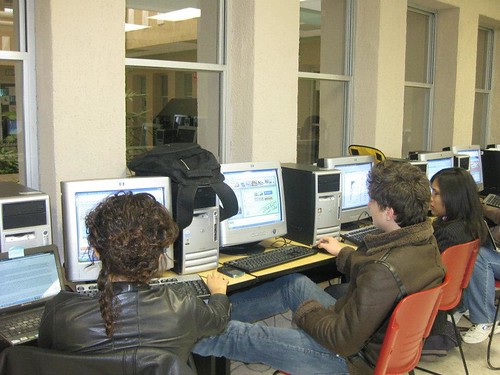Team:CIDEB-UANL Mexico/Collaboration
From 2012hs.igem.org

As we know, the main objective of this project is the creation of a biosensor which could detect the presence of heavy metals in different environments, especially in water. In order to create this biosensor, a genetic circuit will be built with biobricks. The organism we will work with is E.Coli bacteria. The circuit will work as a model which will be tested with Arabinose.
As part of our collaboration between UANL 2011 and us we planned to expose our project in Facultad de Ciencias Biológicas. The exposition was divided into 4 posters, each poster corresponded to different parts of the project. The topics of each poster were:
• Project In General: This poster contained he mission, vision, goals and objectives; the problem, how it started and the solution we provided; project's organization, in other words, the parts or sections that make up the project, i.e safety, human practices, wet-lab, sponsors, image and writing, and the genetic circuit of the project in a general way.
• Laboratory: This poster explained the work that was done inside the lab, the way in which the genetic circuit was divided, in other words, the Biobricks it contained, the reason of why we used those Biobricks for the project, how the genetic circuit worked, how it was activated or how it travelled through each Biobrick depending on the concentration of arabinose the sample shows, and what procedure or protocol must be followed for the construction of the genetic circuit, for instance the transformation of bacteria, enzymes that had to be used, what cuttings or ligations were needed, assure the cuttings and ligations had been made, etc
• Mathematical Model: Here the information showed what a mathematical model is and how it worked. It explained the mathematical model used in our project, the formulas used to describe the transformation and translation for the production of proteins, and to describe the other genes of the project.
• Human Practices: This post was about what human practices mean, which is an important part of the project because they diffuse to the general population (especially the student population) about what is synthetic biology, the applications it has and also to explain what is iGEM, the purpose of iGEM and what is our project. Also it was explained the process of disseminating this information, which was through visits to schools where the members of the team in charge of human practices exposed the information of iGEM synthetic biology and, at the end of presentations, they made a little experiment about synthetic biology and DNA.
The team was distributed in the posters according with the section in which they have been working on, the reason of this is to expose a presentation with a better quality and that, at the moment of been exposing, clarify questions all the questions that arise on the part of judges and other public. When we arrived we started to distribute the posters in the designated area and we began to prepare each one the speech of the presentation.
The exposition was designed to not only judges but also for people in general that were in the Facultad of Ciencias Biológicas and would like to learn about our project. We were not the only ones who had prepared posters for our project; other teams were with their respective projects and were also explaining about their project.
At the end we were satisfied with our work because we could spread our project to the student population, and also helped us a lot because with the doubts that appeared raised on the part of judges and the public we realized that we need to arrange details of the exposition so it could be better. This was new experience for many us because some of them have never exposed to a bigger audience than just a classroom, others already had experience exposing so they had not difficulties, some were nervous, others were calm but for all it was a great experience today.
The team IGEM-UANL came for the first time to the CIDEB in November 20th, 2011 to talk about synthetic biology and iGEM. They were giving some presentations to the students of third semester. After the conferences, our chemistry teacher asked us to make a list of the students interested in participate in the iGEM for the following year. The list were made until December vacations and at the beggining of the year 2012 we started a workshop with the IGEM-UANL team members.
During the first week of January, about 25 students we did some practices and learn to hydrophilize, to transform, to do miniPreparation, to culture and some other protocols. They gave us a manual with the procedures, some information about the plasmid DNA, biobricks, and the function of every protocol. Also we had to respond some activities or questions about every practice and they gave us feedback.
After the workshop, some students decided not continuing participanting in the IGEM-CIDEB team. The rest of the students received some help from the Instructors and, through a Brainstorm,decided the project to participate in the Jamboree in June 2012. Then during the following weekends we had some meetings to shape the project and to organize the tasks and the groups. Also the school bought new equipment such as pipettes, vortex, etc.

They were helping us in the project, in the laboratory and guiding us during the whole semester. This week we had a rally (The Synthetic Rally) organized by IGEM-CIDEB and we had the collaboration of IGEM-UANL team. They helped us giving a conference and with the final activity that was about a simulation of an IGEM competition.
 "
"





